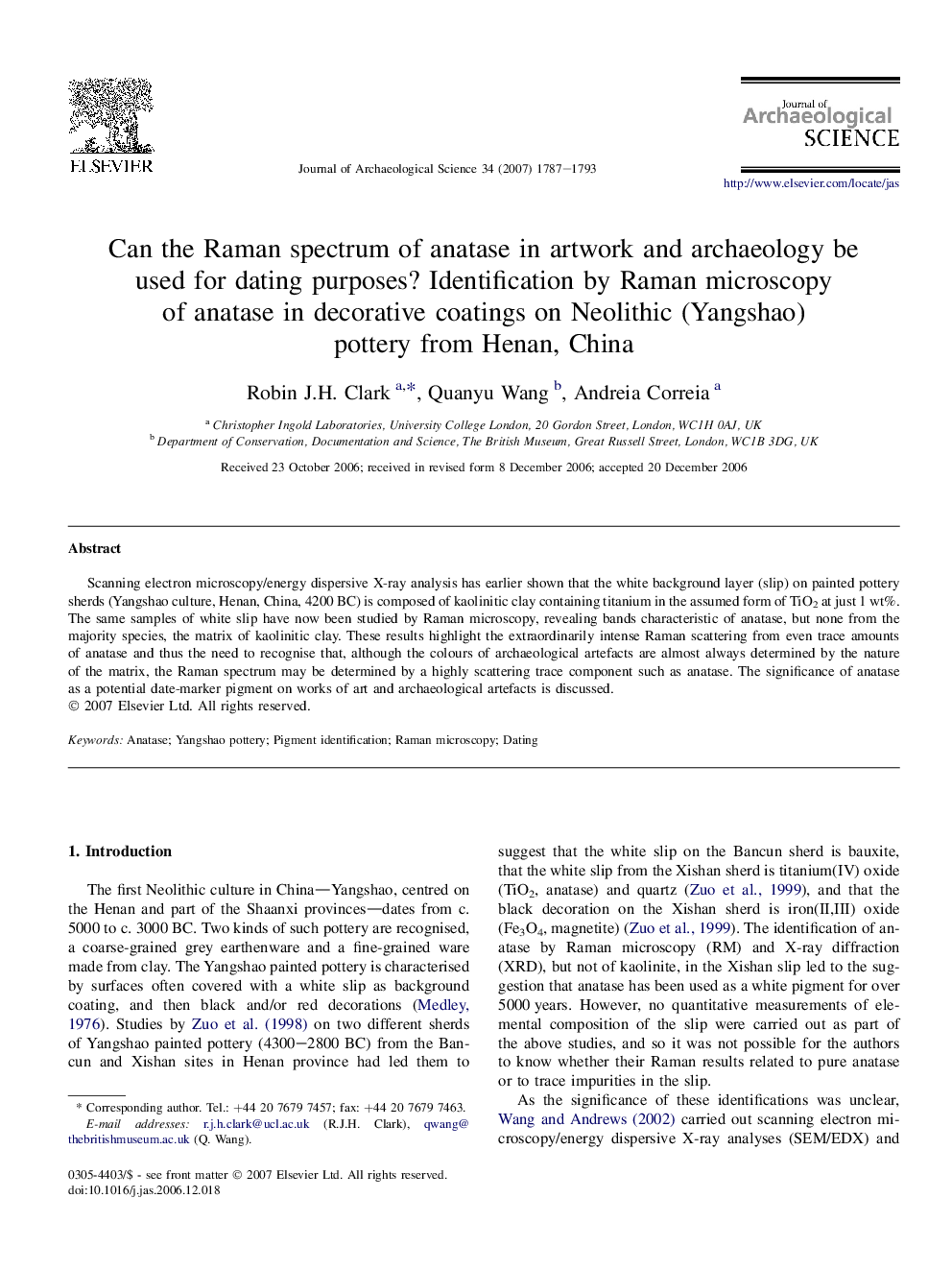| کد مقاله | کد نشریه | سال انتشار | مقاله انگلیسی | نسخه تمام متن |
|---|---|---|---|---|
| 1037602 | 943938 | 2007 | 7 صفحه PDF | دانلود رایگان |

Scanning electron microscopy/energy dispersive X-ray analysis has earlier shown that the white background layer (slip) on painted pottery sherds (Yangshao culture, Henan, China, 4200 BC) is composed of kaolinitic clay containing titanium in the assumed form of TiO2 at just 1 wt%. The same samples of white slip have now been studied by Raman microscopy, revealing bands characteristic of anatase, but none from the majority species, the matrix of kaolinitic clay. These results highlight the extraordinarily intense Raman scattering from even trace amounts of anatase and thus the need to recognise that, although the colours of archaeological artefacts are almost always determined by the nature of the matrix, the Raman spectrum may be determined by a highly scattering trace component such as anatase. The significance of anatase as a potential date-marker pigment on works of art and archaeological artefacts is discussed.
Journal: Journal of Archaeological Science - Volume 34, Issue 11, November 2007, Pages 1787–1793